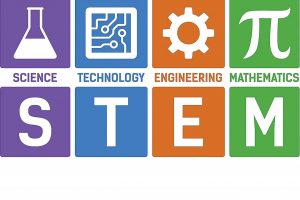
Introduction
STEM (Science, Technology, Engineering, and Mathematics) education plays a crucial role in equipping students with the skills necessary for success in the modern world. It fosters critical thinking, problem-solving, and innovation. However, despite its importance, STEM education faces various challenges that hinder its effectiveness. In this article, we will explore the challenges facing STEM education, incorporating the latest technologies and real-life examples, while highlighting the need for addressing these challenges to ensure a robust STEM learning ecosystem.
- Lack of Access and Equity in STEM Education
One of the primary challenges in STEM education is the lack of access and equity, particularly among underrepresented groups. Students from marginalized communities, low-income backgrounds, or rural areas often face barriers to quality STEM education. Consider the following factors contributing to this challenge:
1.1 Unequal Distribution of Resources
Certain schools, especially those in economically disadvantaged areas, lack the necessary resources to provide quality STEM education. They may lack well-equipped laboratories, modern technology, and qualified teachers, limiting students’ exposure to hands-on experiences and cutting-edge learning opportunities.
1.2 Gender and Racial Disparities
Women and minority students continue to be underrepresented in STEM fields. Societal stereotypes and bias can discourage these groups from pursuing STEM education and careers. Addressing this challenge requires creating inclusive environments that foster diverse perspectives and empower underrepresented students to engage in STEM.
1.3 Limited Access to Technology
Access to technology is a significant factor in STEM education. Students without reliable internet connections, computers, or necessary software may struggle to participate fully in online learning or take advantage of educational resources available on digital platforms. Bridging the digital divide is crucial to ensuring equitable access to STEM education.
- Inadequate Teacher Training and Professional Development
Effective STEM education heavily relies on well-trained teachers who possess deep content knowledge and pedagogical skills. However, many educators face challenges in acquiring the necessary training and professional development opportunities. Consider the following aspects contributing to this challenge:
2.1 Lack of STEM-qualified Teachers
Many schools struggle to recruit and retain qualified STEM teachers. The demand for professionals in STEM fields often surpasses the supply of educators with specialized knowledge. As a result, educators without sufficient expertise may find it challenging to deliver engaging and effective STEM instruction.
2.2 Limited Access to Professional Development
Teachers need access to ongoing professional development opportunities to stay abreast of evolving STEM fields and teaching methodologies. However, limited funding, time constraints, and lack of availability can hinder educators’ access to relevant training, impacting their ability to deliver high-quality STEM education.
2.3 Integration of Technology in Instruction
Teachers need support in effectively integrating technology into STEM instruction. Keeping up with advancements in educational technology and understanding how to leverage digital tools can enhance student engagement and promote hands-on learning experiences. Offering comprehensive technology training to teachers is vital for successful STEM implementation.
- Engaging Students and Promoting STEM Interest
Another challenge in STEM education is engaging students and cultivating a sustained interest in STEM fields. Many students perceive STEM subjects as challenging or uninteresting, leading to disengagement. Consider the following strategies to address this challenge:
3.1 Making STEM Relevant and Relatable
Linking STEM concepts to real-world applications can help students understand their practical significance. Highlighting the impact of STEM in addressing global challenges, such as climate change or healthcare, can ignite students’ interest and motivate them to explore STEM fields further.
3.2 Promoting Hands-on and Experiential Learning
Active learning experiences, such as hands-on experiments, project-based assignments, and field trips, make STEM subjects more engaging and memorable. These experiences provide students with opportunities to apply theoretical knowledge, fostering a deeper understanding of STEM concepts.
3.3 Role Models and Mentoring
Exposure to diverse STEM role models and mentoring programs can inspire and encourage students to pursue STEM careers. Engaging professionals from various STEM fields to share their experiences and insights can help students envision themselves as future scientists, engineers, or mathematicians.
Conclusion
STEM education is critical for preparing students to thrive in an increasingly technology-driven world. However, challenges such as lack of access and equity, inadequate teacher training, and engaging students continue to impede its effectiveness. To address these challenges, a concerted effort is required from educational institutions, policymakers, and society as a whole. By prioritizing equitable access, providing comprehensive teacher training and professional development, and fostering student engagement through relevant and experiential learning, we can create a thriving STEM education ecosystem. As Albert Einstein famously said, “The only source of knowledge is experience.” Let us strive to provide meaningful experiences that ignite the curiosity and passion for STEM in every student, irrespective of their background or circumstances.

















